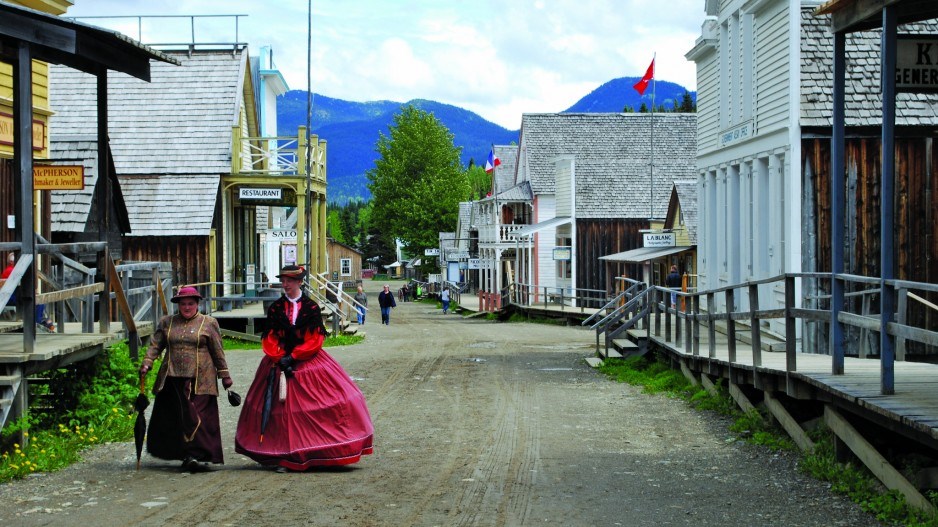When legendary investor and gold bug Eric Sprott speaks at this week’s Sprott-Stansberry Natural Resources Symposium in Vancouver, anyone who lost money and confidence in Barkerville Gold Mines Ltd. (TSX-V:BGM) will no doubt be keen to hear what he might have to say about the company he now controls.
Earlier this month, Barkerville approved a $19 million debt-to-share conversion, giving Sprott a 41% share of the company, which holds tenures and claims in a 60-kilometre-long strip – the Barkerville gold belt – near Wells, B.C.
Following last year’s resignation of founder and former CEO Frank Callaghan, the company brought in a new CEO – Tom Obradovich, a key player in Aurelian Resources Inc., which was acquired by Kinross Gold Corp. (TSX:K) – and is now trying to write a new chapter in the Barkerville saga.
“I’m thrilled that Eric has gotten involved,” Callaghan said. “It’s gone from an exploration project to a mining project, and now is the time that it needs mining people.”
Can Sprott’s involvement restore investor confidence in a gold play plagued by a yearlong trading halt – the result of a flawed resource estimate – a precipitous share price drop and depressed gold prices?
Mining analyst Brent Cook – who was among the first to question the company’s claims about resource estimates in 2012, before things went south – said he thinks the company can regain credibility now that Sprott has taken a personal stake in the company, but he said questions remain about what’s in the ground.
“Slowly, I expect confidence will improve,” he told Business in Vancouver. “But right now, you look out across the landscape and there are a lot of companies with resource estimates and studies that you can buy without taking on the added risk of not knowing what this thing really is – plus the history here.”
Over more than two decades, Callaghan assembled claims and tenures into a 1,177-square-kilometre Cariboo mining district with a rich gold-mining history that started in the 1860s with the Cariboo gold rush. It includes three main zones: Bonanza Ledge, Cow Mountain and Island Mountain.
The company was producing some gold from Bonanza Ledge when, on June 28, 2012, Callaghan issued a news release citing a resource estimate for Cow Mountain that suggested a rich, high-grade gold deposit: 10.6 million ounces of indicated gold. That would have made it an extremely rich find, if it were true.
The press release also claimed that the district as a whole could potentially contain between 65 million and 90 million ounces of high-grade gold. Barkerville’s stock spiked 49% the next day – to $1.21 from $0.81 per share.
But analysts and resource newsletter writers like Cook pounced on the company’s claims.
The BC Securities Commission (BCSC) also questioned the claims and asked for a technical report to back them up. Callaghan confirmed there is an ongoing BCSC investigation but said he could not say if it is related to the resource estimate from 2012. The commission found the resource estimates did not conform to reporting standards, and Barkerville was forced to issue a press release stating its earlier claims, based on a draft technical report, were “inadequately supported” and therefore potentially misleading.
On August 14, 2012, the BCSC halted trading in Barkerville stock. It stayed halted for more than a year, while Barkerville commissioned a new technical report by engineering firms Snowden Mining Industry Consultants and Apex Geoscience Ltd.
The cease-trade order was revoked in July 2013, but trading did not resume until October 9, 2013 – at a time when gold prices were dropping and investors were in full flight from mining stocks.
When trading resumed, Barkerville’s share price sank to $0.57 from $1.22 on the first day of trading. It dipped as low as $0.21 earlier this month.
In October 2013, Sprott, who had invested in Barkerville early on, threw the company a lifeline in the form of a $15 million loan.
Last July, two decades after founding Barkerville’s precursor company – International Wayside Gold Mines – Callaghan resigned as CEO. In February this year, he also resigned as director. However, he remains the company’s second-largest shareholder.
The new technical report that Barkerville commissioned for Cow Mountain – updated in March 2015 – puts the resource at 2.8 million ounces of gold indicated and two million inferred ounces.
Although nowhere near the 10.6 million indicated ounces that Callaghan was citing in 2012, it’s nothing to sneeze at. But Cook still has questions about how the resources have been calculated.
“They’re still using multiple-indicator kriging on this thing, which points to how complex and erratically distributed and nuggety the gold is.”
Kriging, Cook explained, is a mathematical formula used to estimate grades where geological data isn’t available.
“In my view, there really ought to be a new group doing a new resource [estimate] once the data has been all fixed up,” Cook said. “Ultimately, we need to get a reliable pre-feasibility or better study on this to see what’s involved and the mining methods, the cost, the recovery.”
Mickey Fulp, who publishes the Mercenary Geologist newsletter, said there’s no question that Barkerville is sitting on some high-grade gold deposits. He just doesn’t think they are large enough to warrant the kind of investment that Sprott has made.
Despite the problems it has had, Barkerville has managed to raise $6.9 million in private placements in recent weeks and plans to undertake a large-scale drilling program on its Bonanza Ledge property.
Next week: An in-depth look at Frank Callaghan, the colourful, controversial Howe Street promoter behind Barkerville Gold




